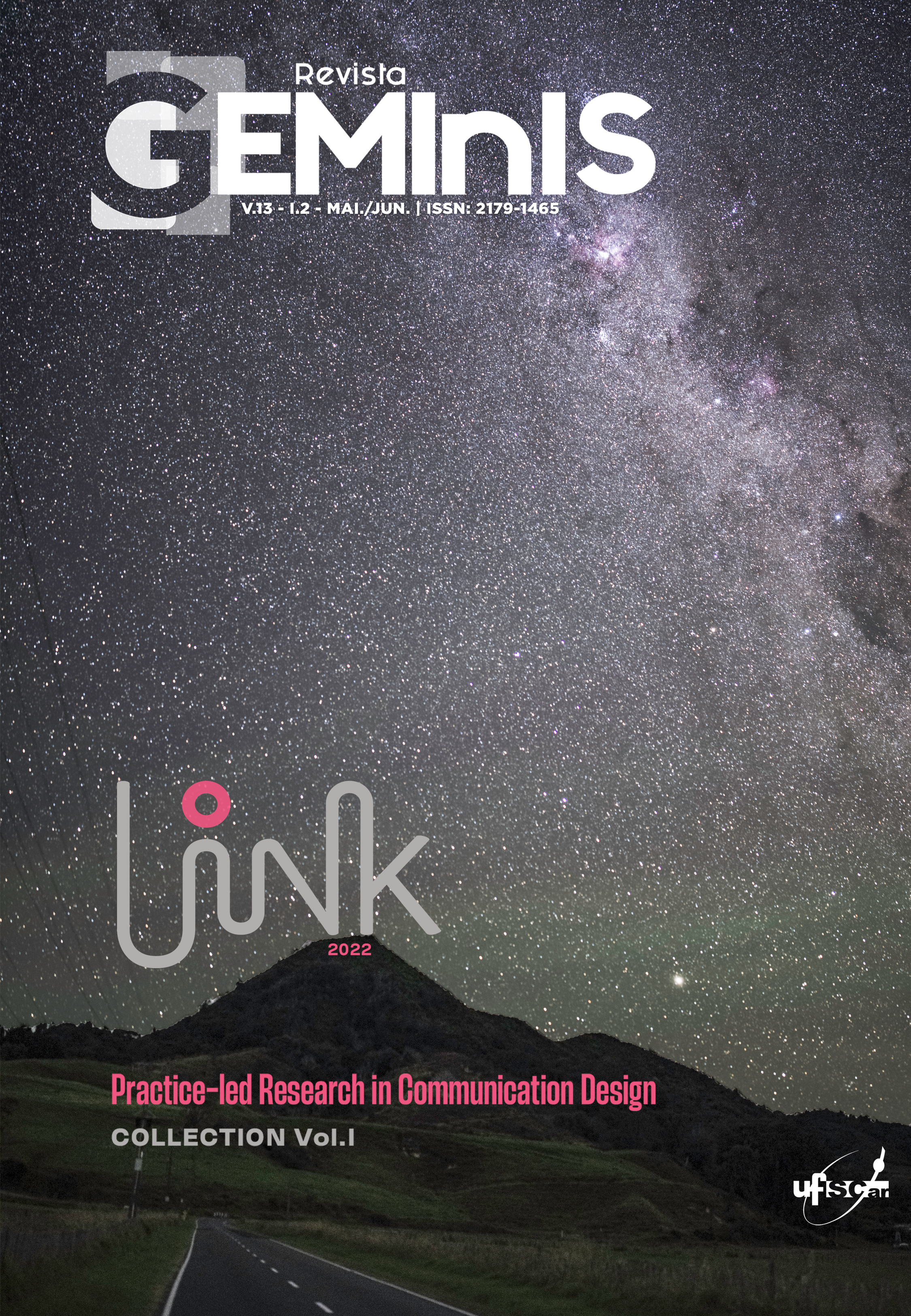Zhe Jiang: a Chinese practice-led research paradigm
DOI:
https://doi.org/10.53450/2179-1465.RG.2022v13i2p29-35Palavras-chave:
Chinese Art, Film Poetry, Artistic Research ParadigmResumo
Broadly, in Chinese Zhe [ 哲] means philosophy and Jiang [ 匠] means craftsman. In contemporary Chinese art practice, Zhe Jiang [ 哲匠] has been defined as “thinking as a philosopher; making as a craftsman”. Artist-researchers who follow Zhe Jiang paradigm improve their artistic skills as well as the academic capabilities. In this article, firstly, Zhe Jiang paradigm is introduced by been compared with Western practice-led research. Secondly, the pathway to reach the mental state of freedom is explained from the aspects of inquiry and forgetting. The mental freedom can be considered as the most unique feature of Zhe Jiang paradigm. Thirdly, the ideal outcome of applying Zhe Jiang paradigm is stated as becoming a “better self”. Lastly, the primary methodology led by the Zhe Jiang paradigm is illustrated through showing examples from my film poem The Heart of Spring[1]. Thus, this article unpacks a journey of exploring Zhe Jiang as a recently developed research paradigm. It draws into a working relationship approaches from both Chinese and Western thinking.
[1] My practice-led, artistic PhD thesis Bright on the grey sea develops a corpus of film poems including The Heart of Spring using the Chinese concept Zhe Jiang as the research paradigm. The online screener of The Heart of Spring is available at: https://vimeo.com/242417969 and password is hmv8534
Downloads
Referências
REFERENCES (English)
Candy, L. (2006). Practice based research: A guide - creativity & cognition studios. Retrieved April 9, 2018, from https://www.creativityandcognition.com/resources/PBR%20Guide-1.1-2006.pdf
Carroll, K. L. (1997). Researching paradigms in art education. In S. D. La Pierre & E. Zimmerman (Eds.), Research methods and methodologies for art education (pp.171-192). Reston, VA: National Art Education Association.
Draper, J. (2004). The relationship between research question and research design. Retrieved April 9, 2018, from http://oro.open.ac.uk/12053/984/jan_s_chapter_final_draft.pdf
Gray, C. (1996, September). Inquiry through practice: Developing appropriate research strategies. Paper presented at the No Guru, No Method? International Conference on Art and Design Research, Helsinki,
Finland. Retrieved April 9, 2018, from http://carolegray.net/Papers%20PDFs/ngnm.pdf
Ings, W. (2011). Managing heuristics as a method of inquiry in autobiographical graphic design theses. International Journal of Art & Design Education, 30(2), 226-241.
Klein, J. (2010). What is artistic research? Retrieved April 9, 2018, from http://www.researchcatalogue.net/view/15292/15293
Mäkelä, M. (2007). Knowing through making: The role of the artefact in practice-led research. Know Techn Pol, 20, 157–163.
Tolich, M., & Davidson, C. (2011). Getting started: An introduction to research methods. Auckland, New Zealand: Pearson.
Zhuang, Z. (2006). The book of Chuang Tzu. (E. Breuilly, W. M. Chang & J. Ramsay, Trans.). the Penguin Group. (Original work published ca. 150 – 300 B.C.) https://terebess.hu/english/tao/ChuangTzu-palmer.pdf
REFERENCES (Chinese)
Chen, C. Y. (2008). 道家思想对中国山水画论的影响 [Influence of Taoism upon Chinese landscape painting theory]. 艺术百家, 4, 65-71.
Fu, Q. L.& Fang, Z. (2018). 哲匠精神与高校育人模式研究 [The spirit of Zhe Jiang and the research mode of tertiary education]. 新美术, 9. 92-96.
Hu, S. X. (2016, October). 从拙匠到哲匠——领悟梁思成先生的教诲. [Understanding giant master: A few memories about Professor Liang Sicheng]. 清华控股. Retrieved April 9, 2022, from https://www.thholding.com.cn/News/show/contentid/1051.html
Qian, X. M. (2016). 高等艺术教育的哲匠精神——访中国美术学院院长许江 [The spirit of Zhe Jiang in higher art education: An interview with Xu Jiang]. 中国高等教育, 15. 41-44.
Xu, J. (2016a, April 21). 许江谈艺术教育的核心与中国美院这十年 [The essence of art education and the past ten years of CAA]. 人民政协网. Retrieved April 9, 2022, from http://www.rmzxb.com.cn/c/2016-04-21/778572.shtml?n2m=1
Xu, J. (2016b). 望境之诗—— 中国美术学院2016 年入学典礼致辞 [The poetics of Wang Jing: The report of orientation ceremony 2016]. 中国美术学院. Retrieved April 9, 2022, from https://www.caa.edu.cn/yzjt/201610/10322.html
Xu, J. (2017, March 2). 哲匠,艺术之美的播种者 [Zhe Jiang is the disseminator of the beauty of art]. 光明日报, 12. Retrieved April 9, 2022, from http://epaper.gmw.cn/gmrb/html/2017-03/02/nw.D110000gmrb_20170302_1-12.htm
Yu, T. Y. (2005). 传统工匠及其现代转型界说 [Conventional craftsman and the definition of its modern transformation].史林, 4, 57-66.
Downloads
Publicado
Como Citar
Edição
Seção
Licença
Copyright (c) 2022 Chen Chen; Marcos Mortensen Steagall

Este trabalho está licenciado sob uma licença Creative Commons Attribution-ShareAlike 4.0 International License.
Autores que publicam nesta revista concordam com os seguintes termos:
a. Autores mantém os direitos autorais e concedem à revista o direito de primeira publicação, com o trabalho simultaneamente licenciado sob a Licença Creative Commons Attribution que permite o compartilhamento do trabalho com reconhecimento da autoria e publicação inicial nesta revista.
b. Autores têm autorização para assumir contratos adicionais separadamente, para distribuição não-exclusiva da versão do trabalho publicada nesta revista (ex.: publicar em repositório institucional ou como capítulo de livro), com reconhecimento de autoria e publicação inicial nesta revista.


